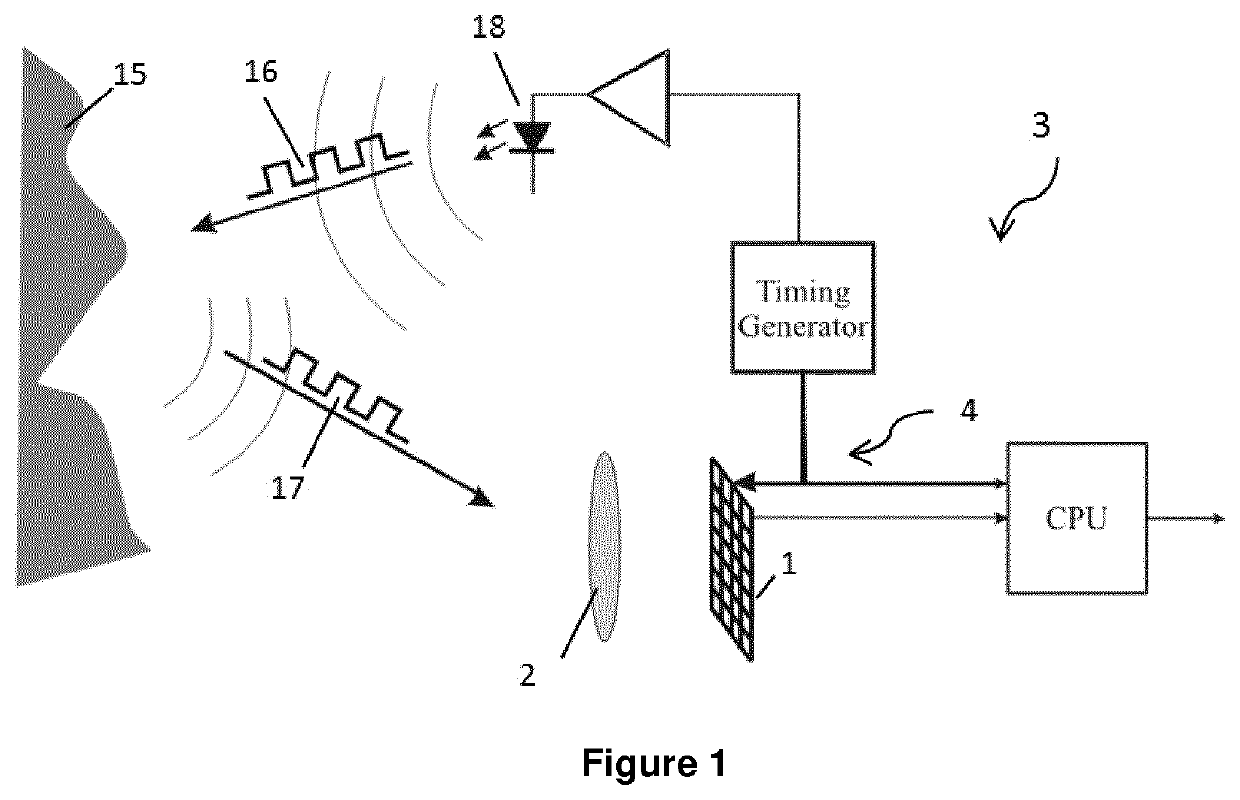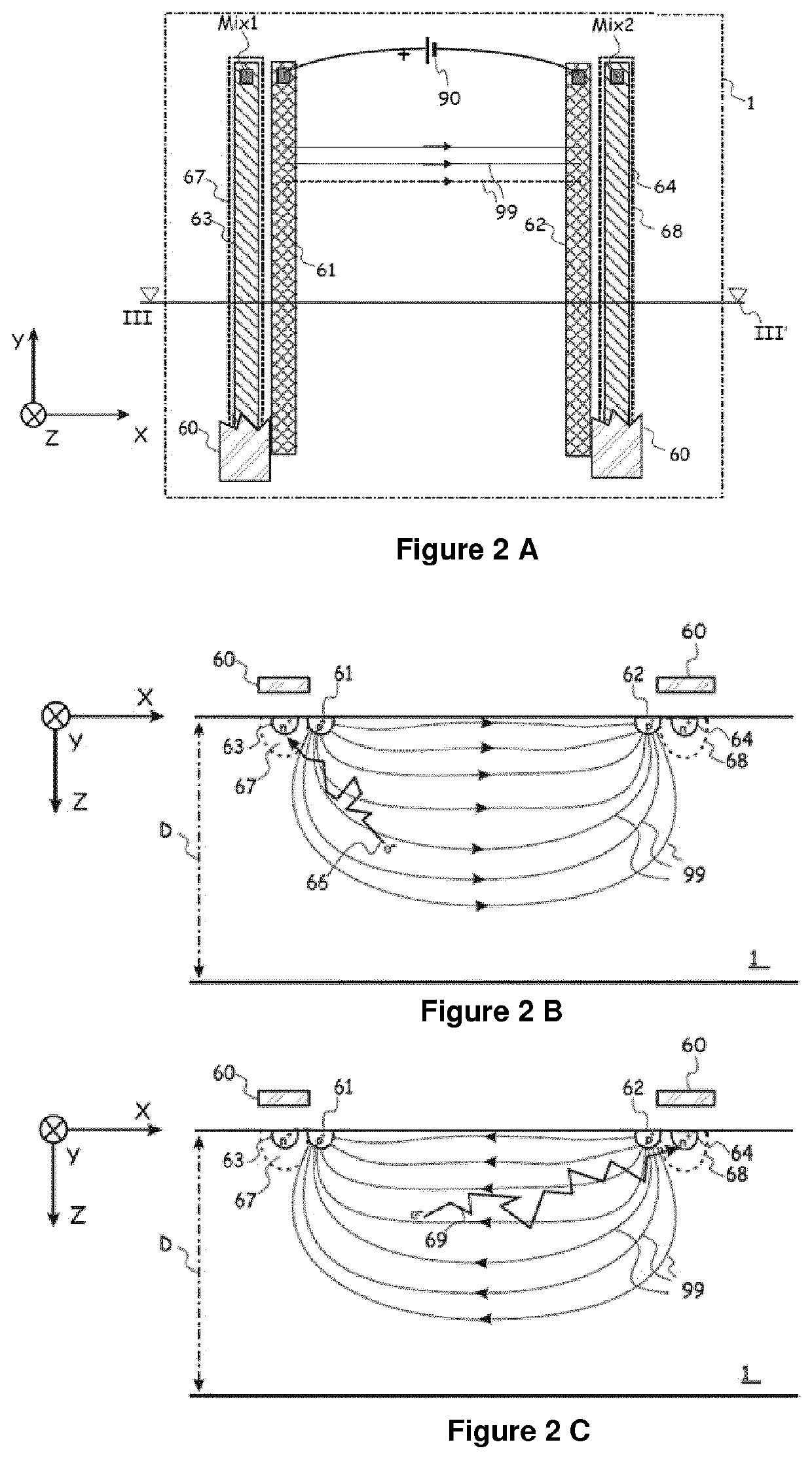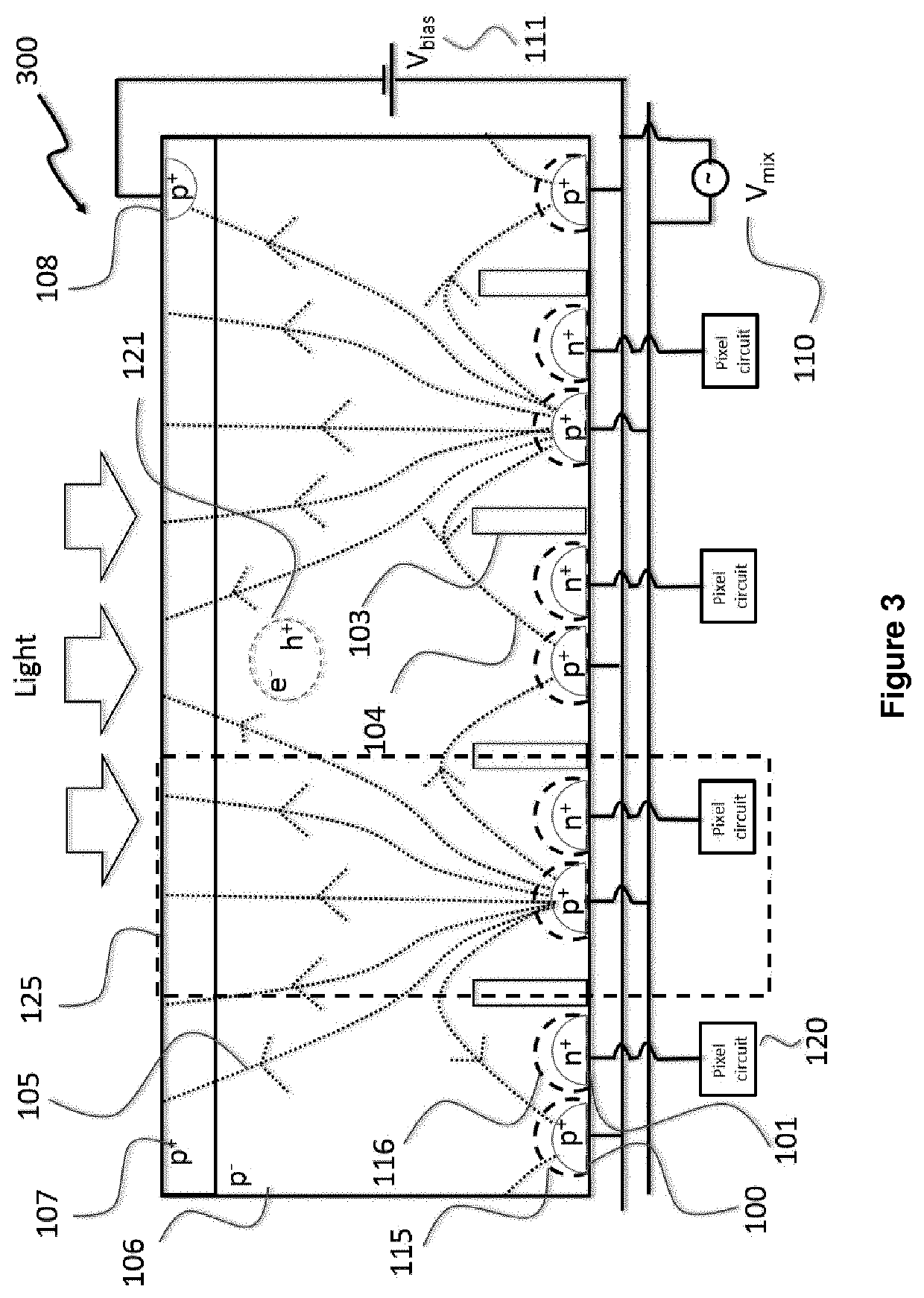Detector device with majority current and a circuitry for controlling the current
a technology of circuitry and current, applied in the direction of radio frequency controlled devices, television systems, instruments, etc., to overcome the problems of reading time and high readout nois
- Summary
- Abstract
- Description
- Claims
- Application Information
AI Technical Summary
Benefits of technology
Problems solved by technology
Method used
Image
Examples
Embodiment Construction
[0025]The present invention will be disclosed in reference to a detection device 300 also termed SENSOR. The detection device 300 contains PIXELS 125 also referred as PIXEL. Typically the Pixel 125 contains at least 1 TAP, consisting of at least 1 detection region and at least 1 control region also referred as TAP.
[0026]The invention will also be explained with reference to p-type epitaxial layer and substrate, but the present invention includes within its scope a complementary device whereby p and n regions become n and p regions respectively. A skilled person can make such modification without departing from the spirit of the invention.
[0027]It should also be understood that the terms n, p, n+, p+ and p−, n-well, p-well, deep n-well and deep p-well are well known by the one skilled in the art. The terms n, p, n+, p+ and p− refer to ranges of doping levels in semiconductor materials well known by the one skilled in the art.
[0028]The terms n and p refer to n-doped and p-doped region...
PUM
| Property | Measurement | Unit |
|---|---|---|
| conductivity | aaaaa | aaaaa |
| conductivity type | aaaaa | aaaaa |
| electrical field | aaaaa | aaaaa |
Abstract
Description
Claims
Application Information
 Login to View More
Login to View More - R&D
- Intellectual Property
- Life Sciences
- Materials
- Tech Scout
- Unparalleled Data Quality
- Higher Quality Content
- 60% Fewer Hallucinations
Browse by: Latest US Patents, China's latest patents, Technical Efficacy Thesaurus, Application Domain, Technology Topic, Popular Technical Reports.
© 2025 PatSnap. All rights reserved.Legal|Privacy policy|Modern Slavery Act Transparency Statement|Sitemap|About US| Contact US: help@patsnap.com



